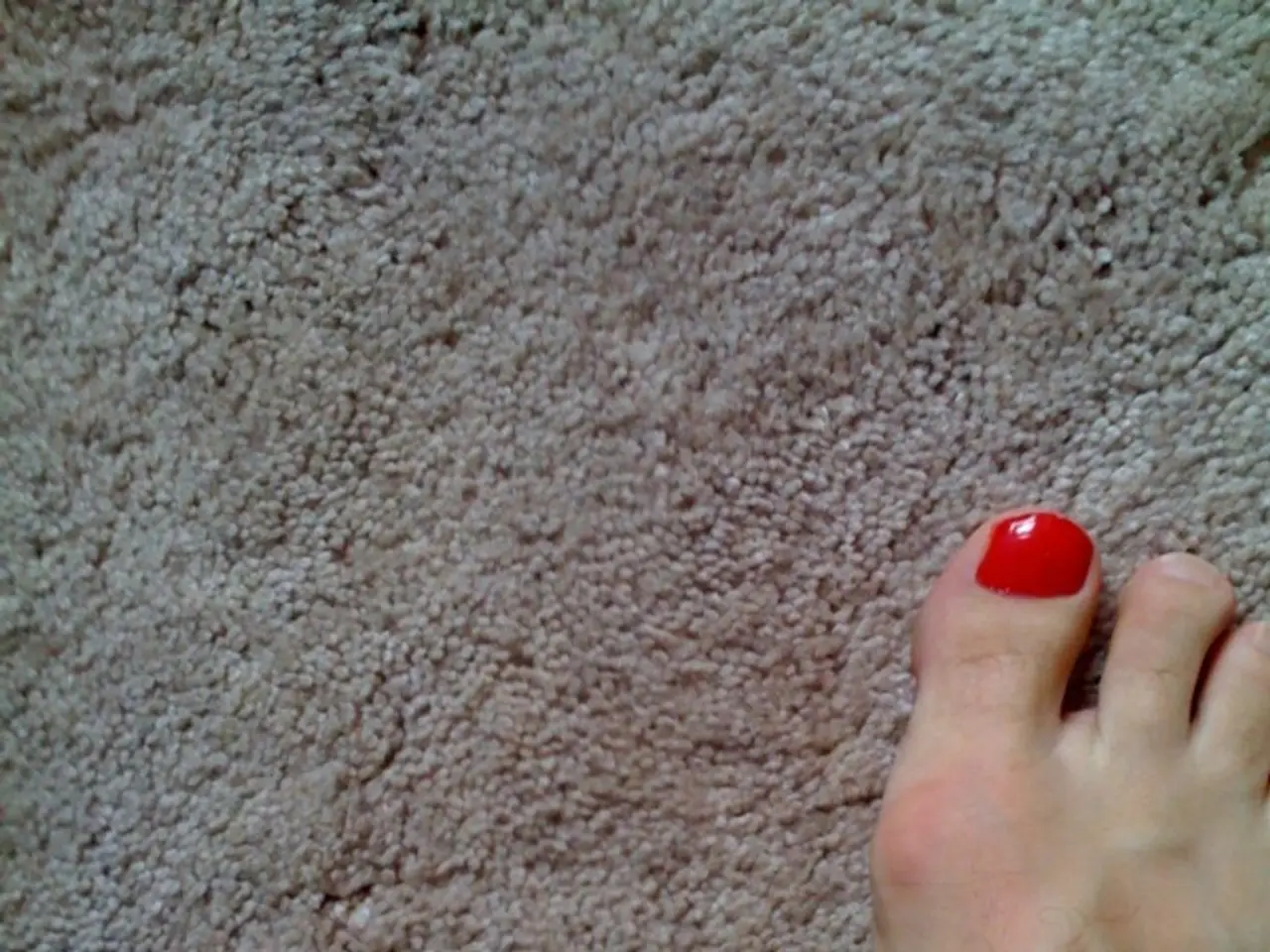Nails Undergo Medical Transformation Due to Rheumatoid Arthritis: Insight into Altered Nail Health
Rheumatoid arthritis (RA) is an autoimmune condition that primarily attacks joints in the hands, wrists, and knees. However, changes in nails can also be a telltale sign of this disease.
One common nail change associated with RA is the appearance of splinter hemorrhages. These are small brown, black, or reddish lines or spots under the fingernail caused by tiny inflamed blood vessels leaking under the nail. Other symptoms of RA include pain or stiffness in more than one joint, tenderness and swelling in more than one joint, symptoms affecting both sides of the body, weight loss, fatigue, fever, and weakness.
Nails may also separate from the nail bed and turn white or yellow, which is more common in psoriatic arthritis (PsA). People with PsA are also more likely to experience nail pitting and more painful nail splitting that can lead to infections.
RA can cause a variety of nail changes, such as ridging, yellowing, thickening, and splinter hemorrhages. In some cases, nails may grow in a downward curving shape, sometimes causing the fingertips to swell and appear club-like. This can also be a sign of heart disease, lung disease, or liver disease.
Small brown spots may appear on the skin around nails, and spider veins that look like red or pink lines may develop in the skin around your nails. Onychorrhexis, or longitudinal ridging, is a condition where grooves develop that run the length of the nails, and can be a symptom of RA.
A condition associated with RA is yellow nail syndrome, which can cause nails to turn yellow, thicken, and curl. This can lead to infection if the nails separate from the nail bed.
Medications used to treat RA, such as methotrexate and biologic disease-modifying antirheumatic drugs (DMARDs), can also cause nail changes. Corticosteroids used in treatment may also contribute to nail alterations.
If left untreated, RA can cause permanent damage to bones and joints. Capillaries under and around nails may become enlarged or deformed or bleed, and doctors can examine with a magnifying dermascope to see problems that aren't visible to the eye.
It's important to note that nail changes may signal a problem before other RA symptoms appear. If you notice any unusual changes in your nails, it's recommended to consult a healthcare professional. Early diagnosis and treatment can help manage RA symptoms and prevent long-term damage.
Read also:
- Enhanced Iron Absorption in Female Health: Biotechnology Developed Plant Protein Outperforms Iron Supplements in Fermentation
- Controversy Surrounding Epstein Heats Up in Washington; Trump Endorses Homelessness Executive Order; More Events Reported
- Prevent the exploitation of our public health care systems for financial gain
- Announced winners of the American Library Association Awards in 2025







